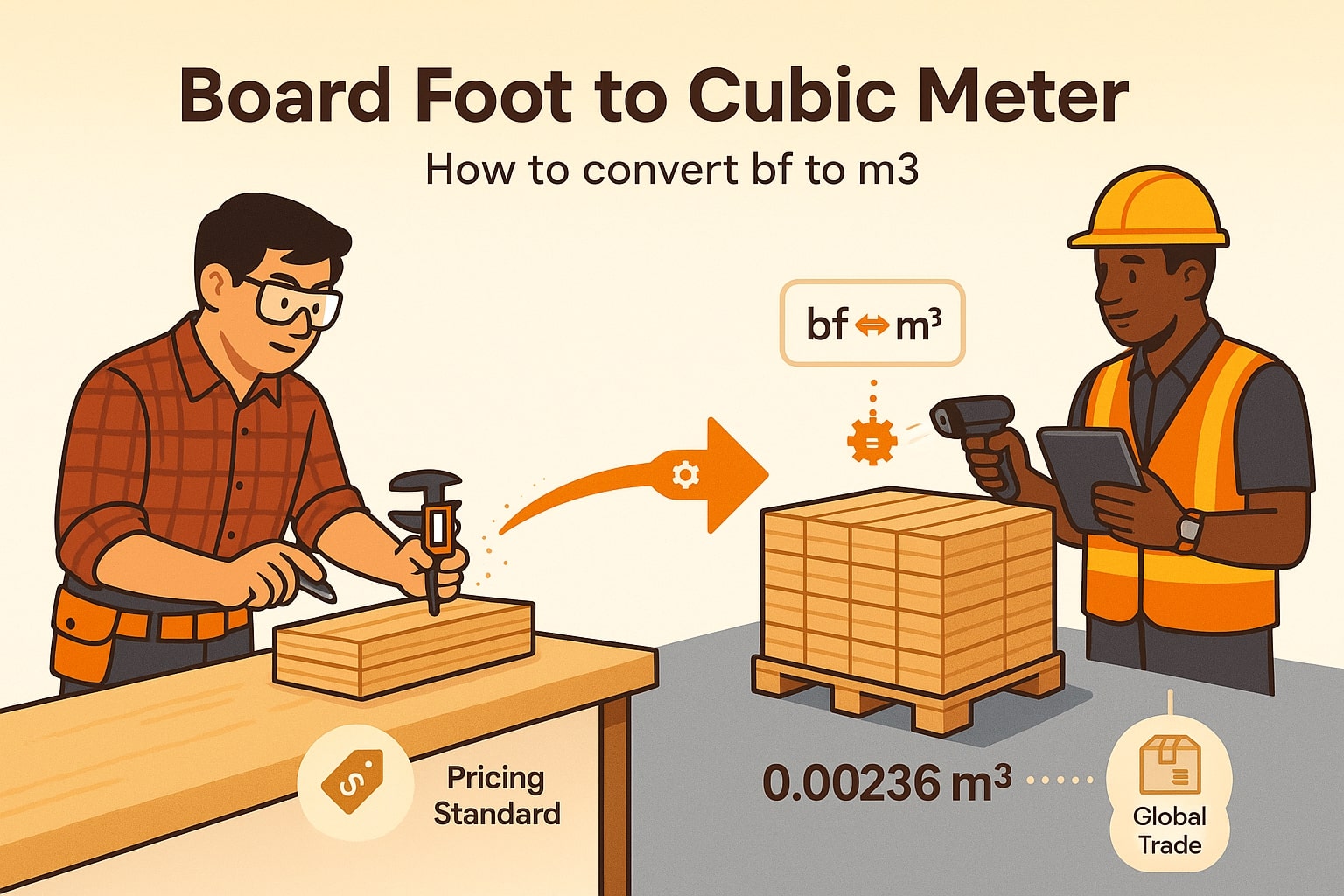Board Foot to Cubic Meter – How to convert bf to m³
Need to convert board foot to cubic meter? These two units both measure lumber volume but cater to very different audiences. The board foot is a North American standard used for pricing and selling wood, while the cubic meter is the metric go-to for international trade, construction, and shipping. If you’re working across borders, exporting lumber, or comparing bulk quantities, understanding this conversion is essential. Let’s go through the math, where each unit is used, and some interesting facts about their roles in the lumber industry.

What is a board foot (bf)?
A board foot represents a piece of wood measuring 1 inch thick, 12 inches wide, and 12 inches long, or 144 cubic inches of volume.
Because it’s tailored for dimensional lumber, board feet make it easy for mills, retailers, and builders to calculate costs based on board thickness and length without converting to less intuitive cubic measures.
What is a cubic meter (m³)?
A cubic meter is the SI (metric) standard unit for volume, equal to a cube measuring 1 meter on each side. That’s 1,000 liters or about 35.315 cubic feet.
Cubic meters are the preferred unit for international trade, freight calculations, and large-scale construction because they’re part of the metric system and universally recognized.
How to convert board foot to cubic meter
The conversion factor is precise, since both can be expressed in cubic inches first:
1 board foot = 0.002359737 cubic meters
To convert:
Cubic Meters (m³) = Board Feet (bf) × 0.002359737
Example: If a mill is exporting 10,000 board feet of lumber:
10,000 × 0.002359737 ≈ 23.597 m³
Want to skip the math? Use our Volume Converter or check more Conversion tools for instant and precise results.
Did you know?
-
Global trade difference: While the U.S. and Canada sell lumber by the board foot, nearly all other countries use cubic meters – exporters must constantly convert to avoid pricing errors.
-
Historic adoption: The board foot became standard in North America during the late 1800s, but the metric system’s rise worldwide made cubic meters the choice for global lumber trade.
-
Forest yield statistics: International forestry reports often express timber harvests in cubic meters, but North American mills frequently keep internal tallies in board feet before converting for export.
-
Environmental impact tracking: Carbon offset projects that involve lumber and reforestation report volumes in cubic meters for consistency, even when partnering with North American timber companies that price in board feet.
How Conversions Keep Exports Moving
In 2022, Canada – one of the world’s largest lumber exporters – shipped over 30 billion board feet of lumber to international markets. According to a trade summary from Natural Resources Canada, nearly all of it had to be reported in cubic meters for customs and shipping contracts.
Without precise conversions from board feet to cubic meters, exporters would risk misreporting cargo weights and volumes, potentially leading to fines, contract disputes, or shipping delays. Tools like Jetcalculator make these large-scale conversions fast, ensuring trade runs smoothly.

Wrapping It Up
Converting board foot to cubic meter is simple: multiply by 0.002359737. While the board foot is perfect for lumberyards and builders in North America, the cubic meter rules international trade and shipping. Being able to move between the two ensures you can work seamlessly, whether you’re budgeting for a project or managing export paperwork.
For quick, accurate conversions, use our Volume Converter or explore other Conversion tools to simplify every lumber calculation.

